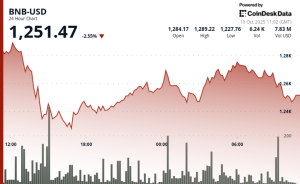Binance CEO Changpeng Zhao, or CZ, recently announced that Binance will start proof-of-reserves to support “full transparency.”
CZ also suggested that all cryptocurrency exchanges do merkle-tree proof-of-reserves. According to the CEO, fractional reserves are suited to traditional banks and not crypto companies.
All crypto exchanges should do merkle-tree proof-of-reserves.
Banks run on fractional reserves.
Crypto exchanges should not.@Binance will start to do proof-of-reserves soon. Full transparency.— CZ
Binance (@cz_binance) November 8, 2022
Worth noting that fractional reserves represent only a portion of a bank’s demand deposits that are kept in reserve and are immediately available for withdrawal. Some crypto influencers believe centralized exchanges still consider fractional reserves, which makes it “worse” for crypto.
Part of the reason why crypto exists is to get rid of fractional reserve. Now CEXs make it worse by recreating fractional reserve without the Fed backstop. Insanely bullish for DeFi. Also regulations should require CEXs to implement proofs of reserve, possibly using ZK proofs.
— Dominator008
(@Dominator0081) November 7, 2022
The recent revelation for starting proof-of-reserve came after CZ announced that Binance would acquire FTX. Earlier, the exchange, led by Sam Bankman Fried, was experiencing massive withdrawals of assets, rapidly depleting its treasury.
The native token was also down by more than 70% in just a few days as a result. Thus there were fears of insolvency of the exchange.
If the acquisition is completed, Binance will oversee a massive portion of the cryptocurrency market.
How can proof-of-reserves enhance the transparency of crypto assets?
Using Proof of Reserves (PoR), users of crypto assets can verify that the balances they hold on exchanges are backed by real assets. This process uses an advanced cryptographic accounting procedure based on the Merkle tree, a data structure explicitly designed to maintain privacy.
The PoR becomes more necessary since point-in-time attestations are easy to manipulate, and simple cash flow analysis does not account for everything (such as unaccounted liabilities). By providing an accurate picture of held balances, it helps crypto exchanges gain users’ trust.
Earlier, there were talks that FTX is running a fractional reserve banking, but users may enjoy full transparency after the recent acquisition. As influencer Dan Ashmore believes FTX could have solved all the earlier insolvencies if it had some sort of on-chain proof of reserves.
Would all the insolvency chat not be solved if FTX had some sort of on-chain proof of reserves?
Seems ironic in the crypto industry that we are all talking about whether or not FTX are good for it. Is it not meant to be transparent in crypto ?
— Dan Ashmore (@DanniiAshmore) November 7, 2022
The post Binance to start proof-of-reserves; CZ proposes all crypto exchanges follow suit appeared first on CryptoSlate.


























